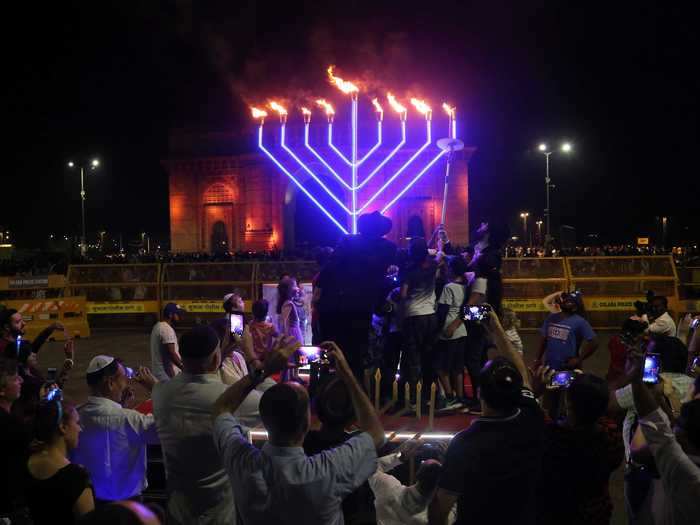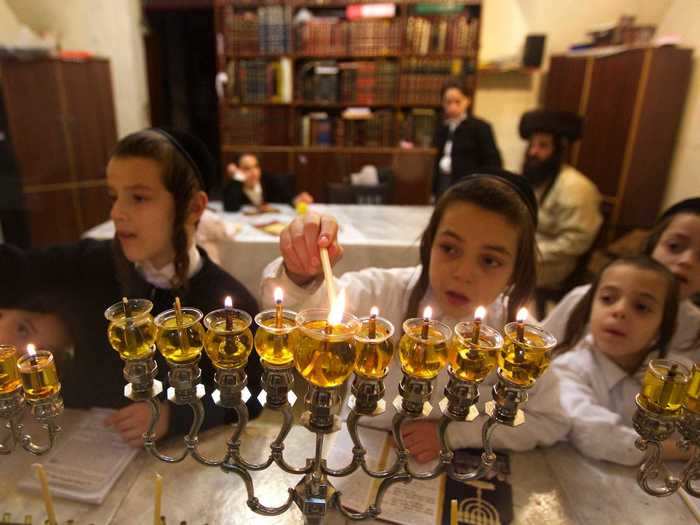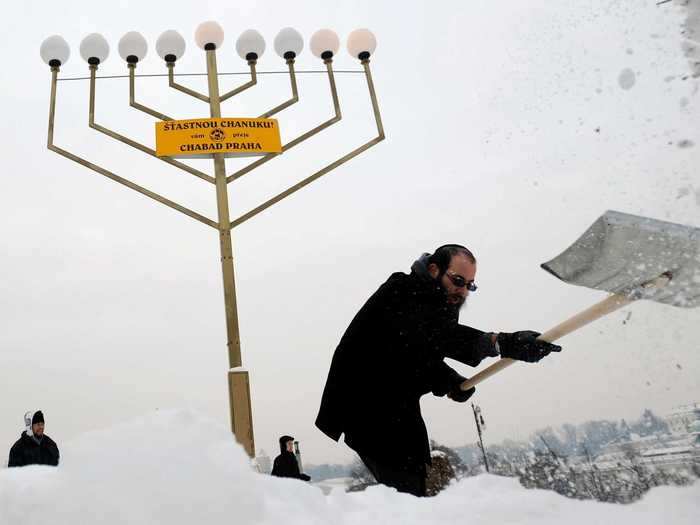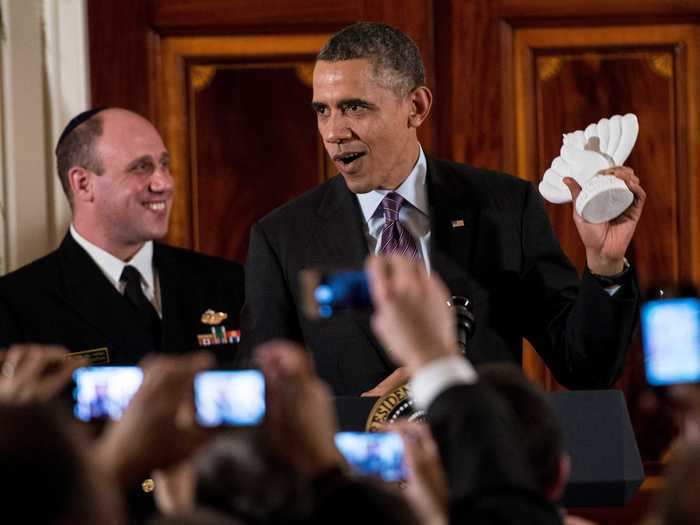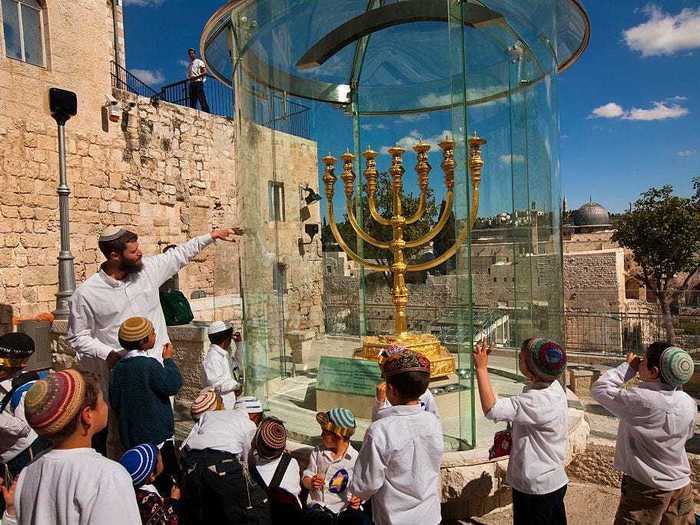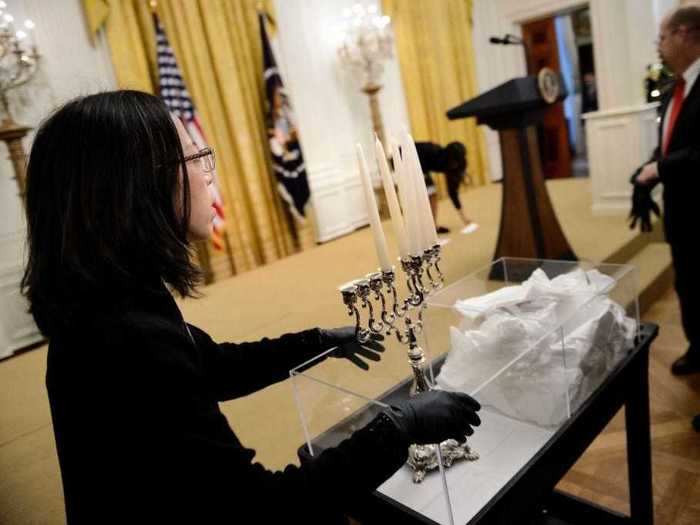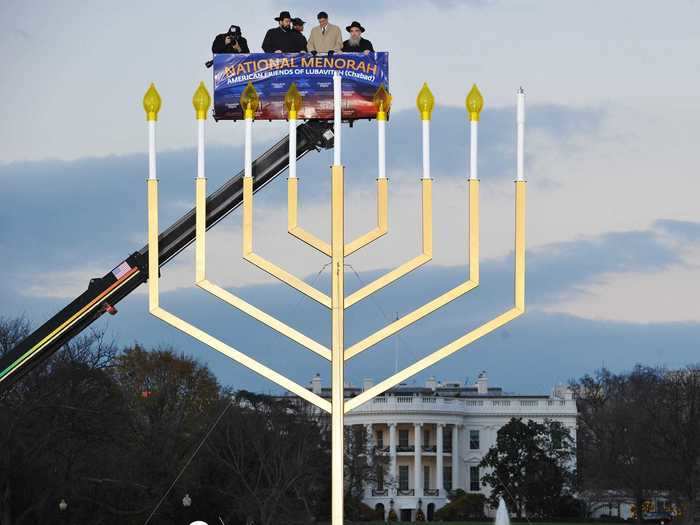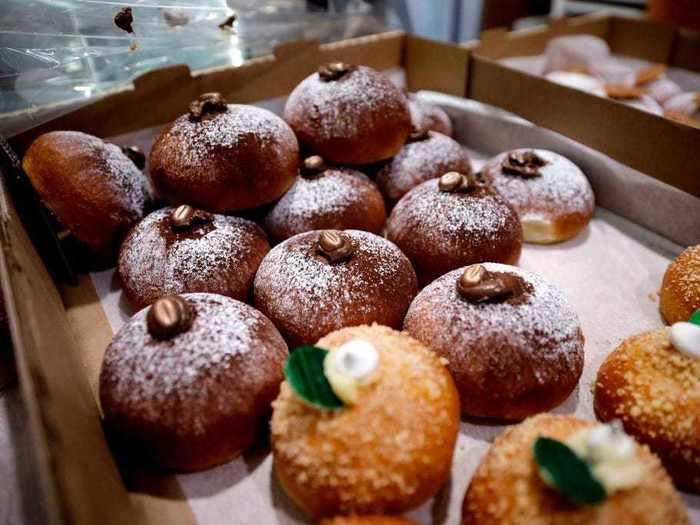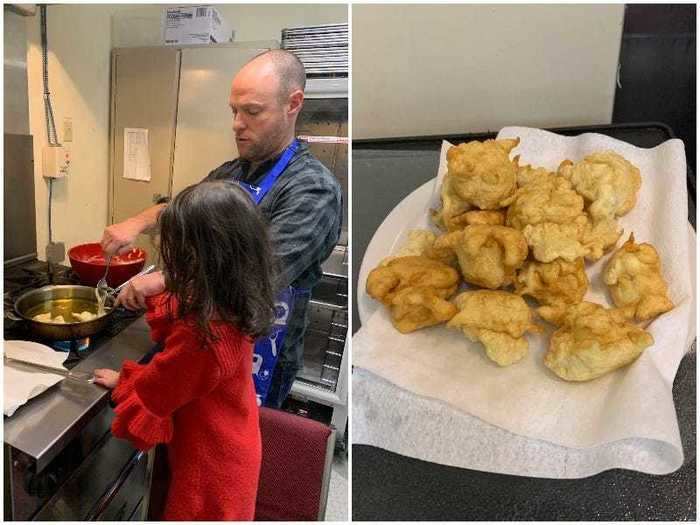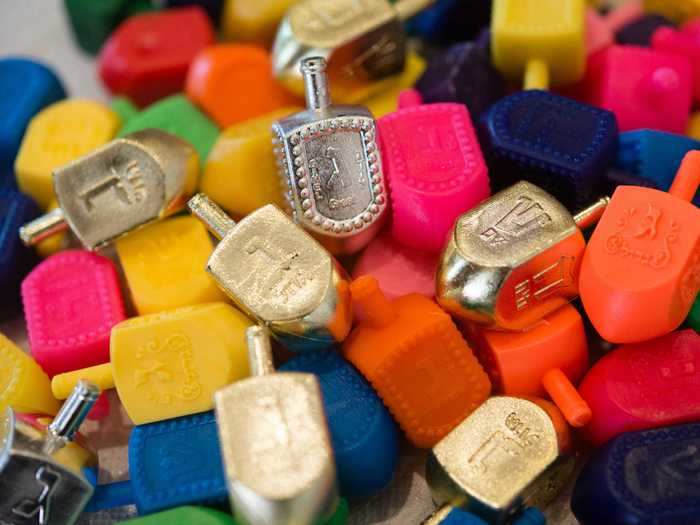Hanukkah doughnuts, called "sufganiyot" in Hebrew.THOMAS COEX/AFP via Getty Images
- Hanukkah means "dedication" in Hebrew, and the holiday commemorates the rededication of the ancient Temple in Jerusalem in 164 BCE.
- Hanukkah usually takes place in December, but the dates change every year since Jewish holidays follow a lunar calendar.
- The National Menorah lit in Washington, DC, is 30 feet tall and requires a lift from a cherry picker to light.
The Jewish holiday of Hanukkah, also known as the Festival of Lights, celebrates the victory of a small group of Jewish rebels over an enormous Greek army to defend their heritage, and a miraculously long-lasting flame that continues to serve as a symbol of hope and perseverance.
According to tradition, while the Jews were living under the Greek empire around 167 BCE, King Antiochus IV outlawed Judaism and desecrated the Holy Temple that stood in Jerusalem. A small Jewish army called the Maccabees led a rebellion against the Greeks and won. When they returned to the Temple to relight the ritual menorah (candelabra), they only found enough oil to last one day, but it miraculously lasted eight.
Jewish people commemorate the Maccabees' victory and the miracle of the oil by lighting a menorah for eight nights and eating fried foods. This year, Hanukkah begins on the evening of December 10, 2020.
Hanukkah is one of the most famous holidays in the Jewish calendar, but here are 10 facts about the Festival of Lights that you may not have known.
Hanukkah means "dedication" in Hebrew.
Members of Jewish community ignite a menorah in Mumbai, India, on the last night of Hanukkah.
Rafiq Maqbool/AP
Hanukkah is not a major religious holiday in the Jewish calendar.
A Jewish family lights candles for the holiday of Hanukkah.
Ronen Zvulun/Reuters
The Books of the Maccabees are not included in the Jewish biblical canon, and the Babylonian Talmud offers only a brief explanation of the holiday's origins, citing the miracle of the oil lasting for eight days.
Other lesser-known biblical Jewish holidays, such as Sukkot and Shavuot, carry much more religious significance than Hanukkah. But because of its proximity to Christmas, Hanukkah became absorbed into the widespread culture of gift-giving and holiday cheer.
Hanukkah usually takes place in December, but the dates change every year.
Yeshiva students clear snow at the menorah ahead of the lighting ceremony marking the start of Hanukkah in Prague.
CTK, Michal Kamaryt/AP
Hanukkah begins on the 25th of the Hebrew lunar month of Kislev every year, but the date in the Gregorian calendar varies.
The lunar calendar is shorter than the solar one, so an extra month is added to the Jewish calendar every two to three years to keep the holidays within certain agricultural seasons and times of year.
This year, Hanukkah begins the evening of December 10.
Thanksgiving and Hanukkah occasionally overlap.
President Obama spoke about the "menurkey," a combination of a menorah and turkey honoring Thanksgiving and Hanukkah, during a Hanukkah reception at the White House in 2013.
BRENDAN SMIALOWSKI/AFP via Getty Images
Because the dates for Jewish holidays vary on the Gregorian calendar, sometimes an early Hanukkah coincides with Thanksgiving.
When the two holidays overlapped in 2013, the phenomenon became known as "Thanksgivukkah" complete with turkey-shaped menorahs playfully dubbed "menurkeys." The next Thanksgivukkah will take place in 2070.
The word "menorah" actually refers to the candelabra with seven branches that was lit in the ancient Temple in Jerusalem.
A full-size recreation of the seven-branched menorah used in the ancient Temple on display in Jerusalem.
Reza/Getty Images
The menorah lit by the Maccabees in the ancient Temple had seven branches — three on each side and one in the middle. The menorahs lit on Hanukkah today have nine branches, four candles on each side for all eight nights of the holiday, and one middle candle used to light the others. The proper term for these nine-branched items is "hanukkiot," but many people still call them "menorahs."
The White House hosts two Hanukkah receptions every year.
A staff member brings a menorah from behind a curtain before its lighting during a Hanukkah reception in the East Room of the White House in 2018.
BRENDAN SMIALOWSKI/AFP via Getty Images
Christmas celebrations at the White House date back to 1800, but Hanukkah wasn't acknowledged until much later. President Jimmy Carter was the first president to recognize Hanukkah with a menorah lighting in 1979 on the Ellipse, a lawn south of the White House. President George W. Bush was the first to hold a menorah lighting inside the White House residence. In 2013, President Barack Obama began holding two Hanukkah receptions, one in the afternoon and one in the evening, to accommodate more guests.
The National Menorah is 30 feet tall and requires a cherry picker to reach high enough to light.
The annual national Hanukkah menorah lighting ceremony outside the White House in 2010.
MANDEL NGAN/AFP via Getty Images
Sufganiyot can contain fillings other than jelly.
Sufganiyot for sale at a market in Jerusalem.
THOMAS COEX/AFP via Getty Images
Jelly doughnuts called sufganiyot are a classic Hanukkah treat, but some chefs get creative with fillings like chocolate, custard, and or fresh fruit and decadent toppings.
There are more traditional Hanukkah foods than just latkes and sufganiyot.
Dreidels, spinning tops with Hebrew letters on them used to play a Hanukkah game, contain different letters depending on where you are in the world.
A collection of dreidels.
Sarah L. Voisin/The Washington Post via Getty Images
"Dreidel" is Yiddish for "spinning top." It has four sides with a different Hebrew letter on each one. Players start with a supply of coins, chocolate or otherwise, and take turns spinning. Depending on which letter the top lands on, they put a coin in the middle, skip their turn, win half of the coins, or take home the entire pot.
The four letters on a dreidel each stand for a Hebrew word. Outside of Israel, the letters represent a sentence that means "a great miracle happened there." In Israel, the last letter is changed, changing the meaning to "a great miracle happened here."

